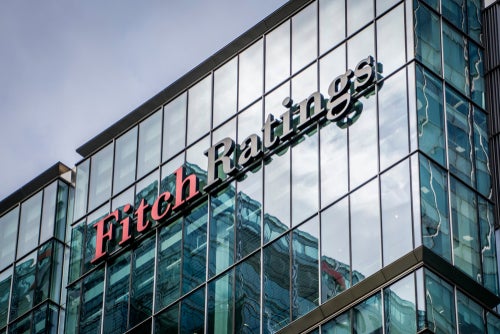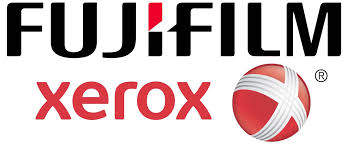Nigel Stead of Lex Autolease talks to Jo Tacon
about bringing together two businesses
to create the largest fleet operator in the UK
When Leasing Life catches up with
Nigel Stead he is at the airport in Stirling, after a busy day
holding workshops and Q&A sessions with staff at Lex
Autolease’s office in the Scottish city.
Stead has had a lot on his plate ever since
taking on the role of managing director of the newly-minted fleet
giant, formed from the fleet companies Lex and Lloyds TSB
Autolease, thanks to the merger of their respective parent banks,
HBOS and Lloyds TSB, in September 2008.
“We are six months into an 18-month
integration process which we hope to complete by the end of 2010,”
Stead says. “We have achieved a great deal but there is still an
awful lot to do.”
The migration of all the company’s commercial
vehicles and cars to one IT platform is, he says, a current
priority.

How well do you really know your competitors?
Access the most comprehensive Company Profiles on the market, powered by GlobalData. Save hours of research. Gain competitive edge.

Thank you!
Your download email will arrive shortly
Not ready to buy yet? Download a free sample
We are confident about the unique quality of our Company Profiles. However, we want you to make the most beneficial decision for your business, so we offer a free sample that you can download by submitting the below form
By GlobalDataNigel Stead: “Customers care about products”
“It is the key to success, although there are
many other tasks to get right as well,” he remarks.
After an evaluation process, which Stead
insists was entered into with “no preconceived ideas”, it was
decided by the lessor’s management team that Lloyds TSB Autolease’s
Connect IT platform would be the “most suitable”.
“We simply wanted to ascertain which would be
the best, for the company and for our customers,” he says.
Having decided on a platform, the next task to
carry out over the next 12 months is so-called “transition drops”,
whereby entire customer segments will be moved over onto the
combined system.
The first such segment to be moved over was
the broker business, as it was “technically the simplest, thanks to
the similarities between the Lex and Autolease legacy broker
businesses”, Stead explains.
The broker IT switch was completed on
schedule, on 1 November 2008, he adds.
There is a risk, Stead acknowledges, that the
creation of such a large fleet – with a fleet over of 300,000
units, Lex Autolease dwarfs its nearest competitor, LeasePlan, with
122,000 – could create a perception that customer service will
suffer as a result of the company’s sheer scale.
“There is no doubt that our scale makes us
unique, but I would very much like to believe that our scale will
bring benefit to customers and colleagues,” he argues. “As long as
we leverage it correctly.
“Our size itself is not the issue. I am sure
we will be able to maintain and improve customer service
levels.
“Customers don’t really care about the scale
of their fleet supplier – they care about products, innovation,
competitive pricing and so on.”
More than just IT needs to be put onto one
platform, Stead points out. The two fleets’ remarketing strategies
were, pre-merger, “similar but different”.
Lex put all its defleeted vehicles through
auctions, and had a sole-supply auction house partner in the form
of BCA.
Lloyds TSB Autolease used dual source
auctions, but also operated two wholly-owned retail sites, one a
super-site off junction 2 of the M5, run under the brand of Black
Horse Car Sales.
The lessor also sold a small proportion of
ex-lease vehicles to drivers, to bank staff, and directly to
consumers over the internet.
It is the Lloyds TSB Autolease model which has
been retained, Stead says, with non-auction disposal routes to be
nurtured and developed over the coming year, and beyond.
He emphasises, however, that auctions remain a
vital and viable disposal method for the majority of defleeted
vehicles.
“Overall, 2008 was difficult [on the residual
values front] but the rather unexpected recovery in used car prices
this year has helped us and, ultimately, our customers,” Stead
adds.
“Whether RVs continue to rise is, however,
much more of a fraught question, and in our internal planning we
are predicting a small further decline, before an anticipated
turnaround in 2011.”
The next year will be a busy one for Lex
Autolease, Stead predicts, adding this is “a good thing”, as “we
can’t afford not to have enough on our plate.”
He says: “Unless we continue to be proactive
in developing products and services to meet our customers’
requirements, we will not succeed to the level that we want
to.”
The green agenda and duty of care/health and
safety are “very much the focus of the business in 2010,” he adds.
Lex Autolease is also working on a new whole-life cost model, which
will be unveiled in the new year.
But the depressed economy has at least brought
some benefits to fleet outsourcing companies, as it has encouraged
many companies in the hard-to-crack SME market to consider the
rewards to be gained from handing over fleet procurement,
management and disposal activity to a third-party provider.
Bad debt levels among customers in the small
business sector have risen only “modestly”, he says, while
underwriting has tightened, inevitably, but not to a level where
standards are “unrealistically careful”.
Stead says: “It does neither customer nor
lessor any good to enter into a mutually unbeneficial situation. We
are clearly operating in a changed credit environment, and have to
adapt to that.”
In fact, adaptability in all areas is an
absolute necessity, Stead believes, along with strong lines of
communication to staff and customers.
“We are in a rapidly changing business and
must acknowledge that,” he concludes.
“Is it tough? Of course it is tough – but we
have to adapt, and the prize will be good for customers and staff
alike.”







